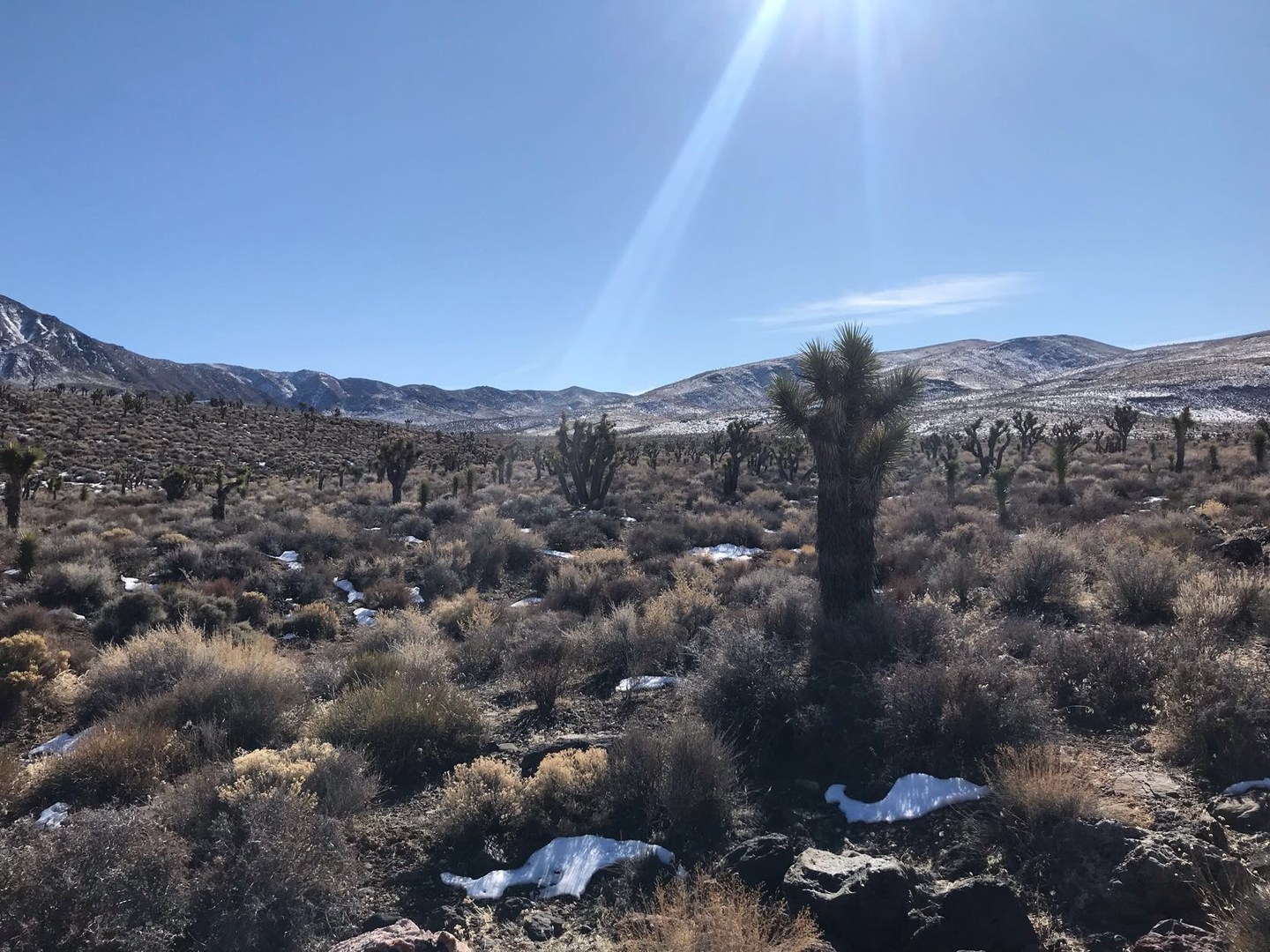You are here
Located in Death Valley National Park, the Lemoigne Canyon to Cottonwood-Marble Loop is a 59-mile lollipop route that runs through the southern portion of the Cottonwood Mountains, a subrange of the Panamint Mountains. The route travels through Lemoigne Canyon and makes a loop connecting Marble Canyon and Cottonwood Canyon. The hike features narrow canyons, shaded cottonwood stands, scenic vistas, unique geology, historical landmarks, and petroglyphs. The area is home to unique plants and animals and visitors might even catch a glimpse of wild burrows and horses.
The trail crosses rugged, rocky, and remote terrain with an overall elevation gain of 11,304 feet. This trail includes both remote sections with opportunities for solitude and areas that are more popular with outdoor enthusiasts. It is a great backpacking trip for individuals that are comfortable with backcountry desert travel.
DESCRIPTION
The route starts at Lemoigne Canyon Road south of Stovepipe Wells and north of Emigrant Campground. On Lemoigne Canyon Road, the road crosses a vast desert landscape dotted with creosote and mesquite trees.
Lemoigne Canyon runs west into the mountains and turns north to connect with Cottonwood Springs. After joining the Cottonwood-Marble Canyon Loop Trail, the route heads north, then east through Marble Canyon, and west through Cottonwood Canyon.
Upon returning to Cottonwood Springs, turn left and head south, retracing your steps back through Lemoigne Canyon.
SEASONS
The lower portions of this route can be extremely hot in the summer and the higher sections of Lemoigne Canyon can receive snow in winter. Check current conditions before heading out.
CAMPING AND PERMITS
Visitors who plan to stay overnight in the backcountry are asked to fill out a free backcountry camping permit. Permits are available at the Furnace Creek Visitor Center and the Stovepipe Wells Ranger Station.
-
Furnace Creek Visitor Center is open 8:00 a.m. to 5:00 p.m, daily.
-
The Stovepipe Wells Ranger Station does not have regular operating hours. The hours and days they are open depend on the temperature and staffing. Call 1-760-786-3200 for current information and status.
WATER
Check conditions prior to your trip. Water sources are seasonal and subject to change at any time. Springs are usually reliable between December - March. Filter or treat all water.
-
Cottonwood Canyon: This is a seasonal water source. Water is typically visible at the end of Cottonwood Canyon Road with additional periodic access sites as you hike up the canyon.
-
Cottonwood Springs: This is a seasonal source, but is likely the most reliable.
-
Deadhorse Canyon: This is a seasonal source and is known to be one of the first to dry up.
WILDERNESS REGULATIONS
The following is a list of Wilderness specific regulations that are critical for the protection of this fragile environment. Please visit https://www.nps.gov/deva/learn/management/rules-and-regulations.htm, for a more comprehensive list.
-
Vehicles are not allowed to travel off-road.
-
Bicycles and other motorized vehicles are not permitted in designated Wilderness.
-
Pets are not allowed in the wilderness or on trails.
-
Hunting and trapping is prohibited.
-
The use of drones is prohibited.
-
Theft and vandalism are prohibited. Visitors are not allowed to collect or disturb any natural materials such as rocks, plants, or animals.
ADDITIONAL INFORMATION
Backcountry and Wilderness Map
Death Valley National Park Visitor Guide
Backcountry Camping General Information.
NPS - Backcountry Camping Areas
Logistics + Planning
Current Weather: Powered by Dark Sky






























Comments
Sign In and share them.